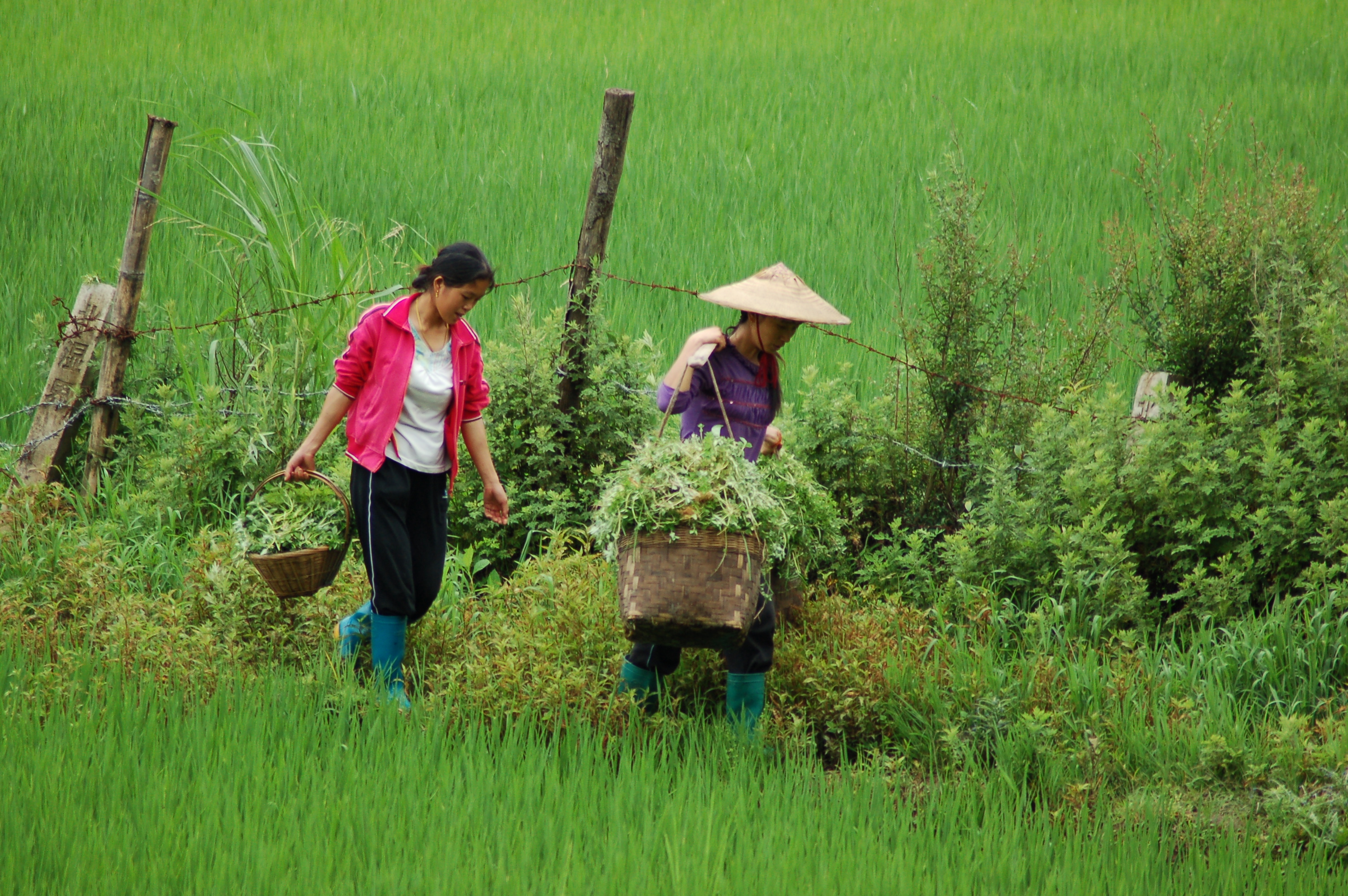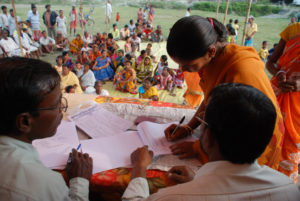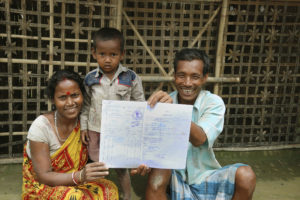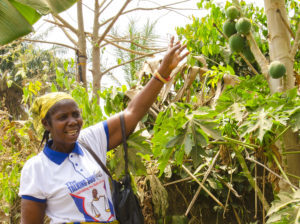This March, the World Bank Land and Poverty Conference featured progress on the Sustainable Development Goals (SDGs) as a key theme. Practitioners, experts, government officials, and development partners tackled the land sector’s complicated and herculean task of supporting governments to implement the SDGs from numerous angles: opportunities and challenges in SDG data gathering and monitoring, links between the SDGs and halting land degradation, and overall progress on advocacy and implementation of land-related SDGs thus far.
This focus reflects the excitement and opportunity the SDGs have created. But beyond being a technical undertaking in the development realm, the SDG framework also represents a paradigm shift—toward a human rights framework, with sustainable development as its goal.
This is a significant leap from the more limited vision of the Millennium Development Goals. While the MDG recognised some economic and social rights, they did not apply a universal human rights approach.
This shift has created links and overlaps between the SDGs and the human rights realms, and results in a catalytic space for land rights advocacy. Both realms share common goals: human dignity and well-being, achieved through substantive empowerment and poverty alleviation. And in both realms, bridging the gap between policy and the realities on the ground presents a set of challenges with overlapping solutions and needs for cross-sector coordination.
Land Rights in the SDGs presents an opportunity and a need.
The SDGs include three sex-disaggregated indicators on land (1.4.2, 5.a.1, and 5.a.2). These indicators call on governments to measure documented land rights for women and men, women and men’s perceptions of land tenure security, the proportion of women and men with secure tenure over agricultural land, including the share of women with rights to agricultural land, and to report on legal guarantees of equality for women’s ownership and control of land, in both formal and customary law. Other goals include targets and indicators related to land (Goal 2: Zero Hunger, Goal 11: Sustainable Cities, and Goal 15: Life on Land).
IN THE PHOTO: A previously landless woman in West Bengal, India, signs to receive a title to her own plot of land. In India and elsewhere, governments are putting women’s names on title documents to improve gender equality in land rights. PHOTO CREDIT: Landesa
This inclusion of strong land rights indicators is demonstrative of growing global recognition of land rights. Sustained advocacy efforts have resulted in reclassification of all three indicators under Tier II, meaning that there is agreement at the global level on the methodology for collecting data to track their progress. These efforts are crucial. Governments can now begin to implement the methodology, collecting needed data to monitor land rights in accordance with a global standard. These indicators’ inclusion in national-level data gathering efforts will enable understanding of the current status of rights to land for women and men, paving the way to enact policies and programs to strengthen these rights.
Governments require enormous resources to achieve SDG implementation, and this requires strategic and sustained coordination of efforts among actors at global, national, and local levels, and across sectors. Success for the 2030 Agenda also requires identifying modes for institutionalising the monitoring and reporting systems it produces where possible and useful. Governments will need information on tenure security after 2030; human rights mechanisms could be key in incentivising and providing accountability for that institutionalisation and carrying forward the progress made under the SDGs.
Land as a human right includes existing and developing standards.
This growing global recognition of the centrality of land rights is also evidenced in the human rights realm. International human rights standards on land rights are increasingly gaining definition and traction. The United Nations Committee for Economic, Social and Cultural Rights (CESCR), which oversees compliance by 165 states parties to the International Covenant on Economic, Social and Cultural Rights, has issued a host of Concluding Observations tying economic, social, and cultural rights to land rights. CESCR’s recently adopted General Comment on State Obligations in the Context of Business Activities recognises the centrality of land and natural resources to rural people, with special references to women and to indigenous and customary landholders.
The CESCR is currently considering drafting a General Comment on the right to access land. This unprecedented step builds on the Concluding Observations and other Committee work already highlighted. If adopted, this General Comment would be the most authoritative statement on land from a human rights perspective to date and would serve as a standard by which to measure governments’ compliance with the Convention. Civil Society Organisations (CSOs) could then use it as a reference when lobbying their governments as well as the Committee itself for action on land rights in law and practice.
CESCR’s work dovetails with the recent standard set by the Committee for the Elimination of Discrimination Against Women (CEDAW) in their General Recommendation on the rights of rural women, explicitly declaring “rural women’s rights to land and natural resources to be fundamental human rights.”
The work of these treaty monitoring bodies is complemented by other significant additions in the international human rights realm: The United Nations Working Group on the issue of discrimination against women in law and practice recently recognised the centrality of women’s land rights for sustainable development in a first-of-its-kind position paper.
Human rights bodies have also issued survey reports on the right to land, including the Office of the High Commissioner for Human Rights, and UN Women, on women’s rights to land and natural resources.
IN THE PHOTO: A family in West Bengal holds a land title document. Indicators in the United Nations Sustainable Development goals measure both documented land rights and perceptions of land tenure security for men and women. PHOTO CREDIT: Landesa
Treaty monitoring bodies, special rapporteurs, and United Nations working groups bolster and overlap with work underway to implement the SDGs. These two realms will continue to work in parallel until 2030. The human rights realm—with scheduled periodic reviews of most countries under most treaties, country visits, and reporting structures—stands ready to weave efforts for sustainable development into a well-established system for national and global accountability.
Human rights standards on land and SDG land-related indicators create overlaps in incentives, implementation, and enforcement for both realms.
It cannot be overstated that the accelerating global recognition of land rights—especially women’s land rights—in the human rights and development realms is unprecedented, creating unequalled opportunity to leverage both movements to achieve significant progress in alleviating poverty through strengthening rights to land. This powerful alignment, coupled with the way both realms operate, creates a reinforcing cycle:
- Because treaty obligations are binding, they serve as an incentive for governments to prove that they are achieving progress toward human rights norms contained in treaties. A second incentive is donor investment: both realms draw donor interest and require donor involvement, both to bolster government and CSO capacity and because coordination is needed across international stakeholders; governments have an incentive to harmonise their efforts to best utilise resources and to attract this investment.
- The SDGs—designed to qualify and quantify the status of land rights for women and men, and to measure progress at a national level—provide a ground-level implementation framework that complements and gives feet to human rights dictates. Both realms rely on grassroots efforts and aim for grassroots effects. And the success of both human rights treaty compliance and the SDGs is borne out at the local level for individuals and communities, where the deprivation and discrimination these global efforts seek to address is felt. These needs and impacts mean that data collection on rural land rights will require coordination with local level actors in every country if it is to be done in an equitable, inclusive, and gender-responsive way and if it is to be effective.
- The SDGs’ focus on data then points back to the role of the human rights realm: human rights bodies and mechanisms rely on ground-level data for enforcement of government obligations. Both treaty obligations and SDG implementation seat accountability with national-level governments. This creates a strategic opportunity to identify efforts that can satisfy both, or that will help one effort complement the other. Both realms rely on international level accountability, national level planning, and local level implementation and evaluation; this complex landscape requires streamlined—not duplicated—efforts.
These links between developing standards on land in international human rights and the SDGs should inform policy and practice. But this translation, from high-level global policy and international law into real change on the ground, will require practitioners and other stakeholders at all levels to work in close collaboration.
IN THE PHOTO: A Liberian widow points to a papaya tree growing on a plot of land that belongs to her son. Like many women around the world, her rights to access and use the land are dependent on her relationship to a male relative. PHOTO CREDIT: Landesa
Leveraging Human Rights Developments and SDG Implementation
Civil society is uniquely placed to address this gap, connecting the human rights and development realms for strategic results for the people both realms aim to help: by reminding governments of their incentives through direct advocacy and through advocacy with human rights bodies; by serving as both collectors and reporters of data, working with communities and government agencies at grassroots, regional, and national levels; and sounding the alarm when enforcement falls short or is absent.
Local civil society is best positioned to contextualise the SDGs in communities and inform human rights bodies about realities at the ground level. But these organisations frequently lack adequate funding and access to do the work at both levels.
Their capacity should be built and leveraged to achieve key aims in both realms. Both global and national CSOs with knowledge of both realms and the relationships between them can lobby for more strategic use of resources at national and local levels, and attract support for their effort from both development and human rights partners. These organisations can then work with local civil society to ensure that ground-level data reaches the global level, and to create access to global spaces for grassroots voices, movements, and organisations. With sufficient funding and capacity building, local level CSOs can pilot and scale land-based interventions to address poverty and strengthen human rights and contribute to national-level efforts to collect data to support the SDGs.
Landesa is currently supporting the innovative work of Espaço Feminista, a grassroots organisation in Brazil that has created and is testing a model to build cadres of female leaders within rural communities who can collect data to reflect communities’ realities and support the SDG. These groups of women then use data to lobby local, regional, and national governments for better implementation of policies and laws and for reform as needed.
Civil society can use this type of approach to advocate for governments to improve their capacity on land governance by leveraging SDG goals, assisting governments to develop data-driven policy. This could be accomplished through work with National Statistics Bureaus, land sector agencies, and gender ministries to create and implement nationally representative strategies for data collection, and by targeting the gap in available research on women’s land ownership. Organisations can strengthen this work by incorporating a human rights lens, referencing human rights standards on land, contributing to shadow reports submitted to treaty-monitoring bodies, and coordinating with government officials and civil society that serve as liaisons to or advocate with treaty-monitoring bodies.
Landesa’s Tanzania team recently conducted trainings with both government officials and civil society members on the importance of land rights in the SDGs and women’s land rights in particular. When Tanzania is up for review under CESCR or CEDAW, they can feature these trainings as evidence of efforts to comply with both conventions and simultaneously implement the SDGs. As treaty-monitoring bodies are increasingly calling on governments to include information on SDG implementation, governments do well to consider now how their efforts to achieve results in both realms relate to each other.
Landesa will also work with several partners to launch a new global five-year campaign this year to improve land rights for women. A strong, well-coordinated, cross-sector global campaign comprising of stakeholders big and small – from local grassroots and community-based groups to international development and private sector organisations, and everyone in between – has the potential for significant impact in bridging the global-to-local gap to strengthen SDG implementation and human rights rule of law.
This focus on civil society can help governments create, strengthen, and sustain grassroots reach. A lack of government capacity in rural areas too often means a lack of clear information to inform policy and legal reform, including available data on SDG goals, which in turn limits human rights implementation and reporting.
The emerging right to land in the human rights realm creates increased accountability for governments; meeting treaty obligations with regard to land will require even more resources. Government partnerships with civil society specifically targeted to joint SDG implementation and the fulfilment of human rights mandates can be a solution to this demand, extending government reach and capacity, amplifying marginalised voices (women, youth, migrants) by better reflecting rural realities, and ensuring that tactics for strengthening land governance are strategic.
Elevating civil society as key agents in both realms can also help donors, who often face significant strategic challenges in funding SDG implementation. Coordination with governments and CSOs requires significant effort for donors and piloting and scaling interventions runs the risk of being piecemeal rather than strategic and linked to national contexts and national and local actors’ priorities. These challenges could be addressed by partnering with local civil society to include grassroots interests and apply a human rights lens for a more holistic and strategic approach.
This cycle of incentives, implementation, and enforcement should be leveraged for strong, gender-responsive land rights everywhere; after all, it’s human thriving we’re talking about.
Editors Note: The opinions expressed here by Impakter.com columnists are their own, not those of Impakter.com













